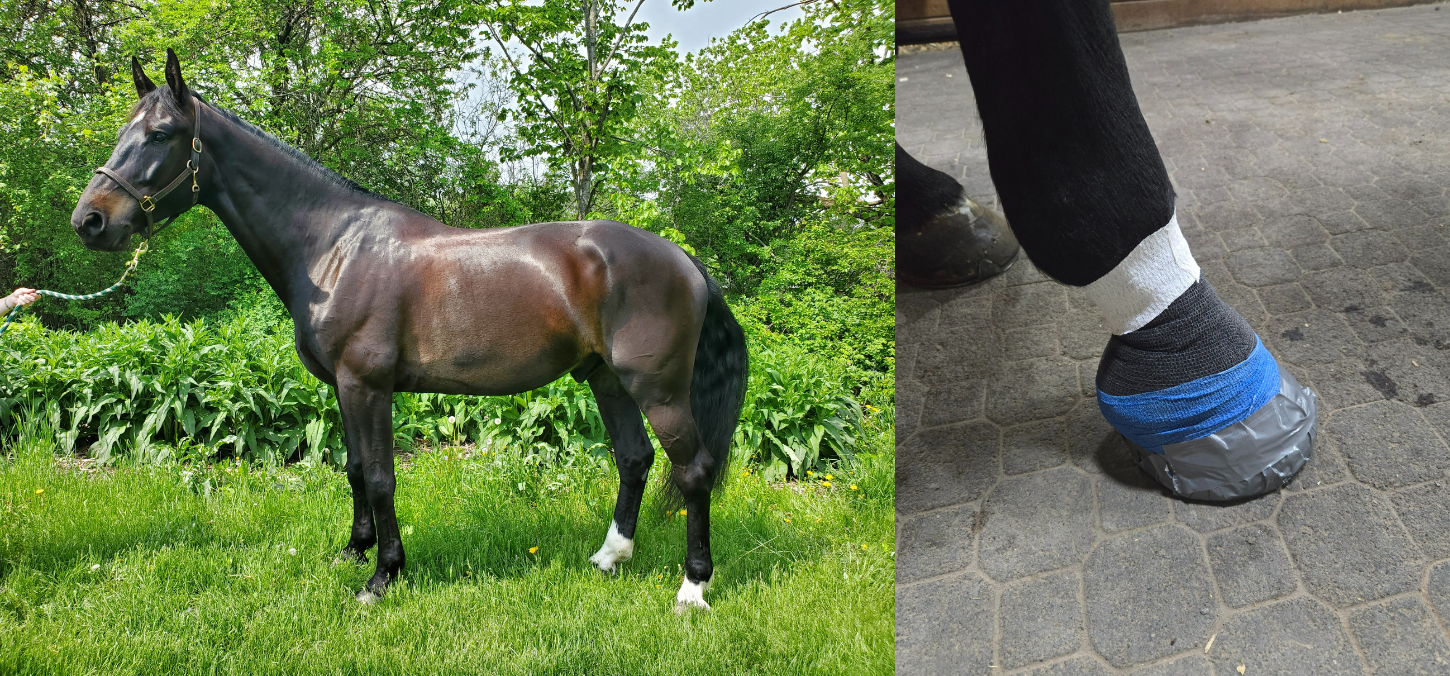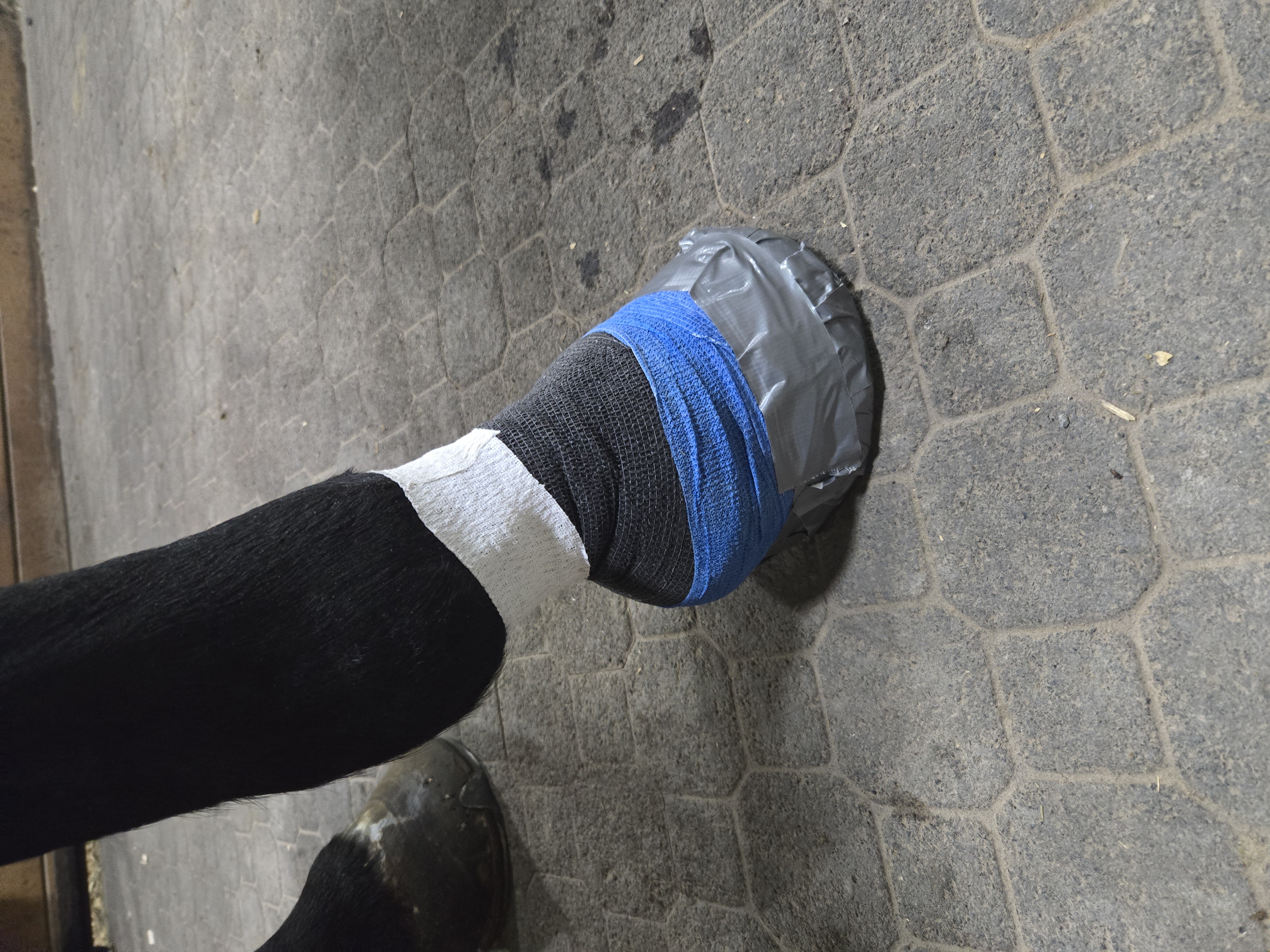
From the lab to the barn: how dentistry research is being applied beyond the mouth
By Rachel Boutet
Professor Anil Kishen knew nanoparticles had potential applications well beyond dentistry, but recently, he had the opportunity to see its impact on an injured horse.
“We’re familiar with using nanoparticles for different purposes outside of the mouth for wound healing,” says Kishen, who is also associate dean, graduate education. “We use tunable bioactive nanoparticles for specific treatments that kill the bacteria causing infection, help modify the wound surface to allow for cellular healing, and assist in the migration of new cells to allow for wound healing. We have seen success when used on deep dental caries and preventative caries surrounding orthodontic braces. But a horse? That hadn’t been explored yet.”
The opportunity presented itself when Lisa Hutchinson, Dentistry's graduate programs coordinator, approached Kishen with an issue with her horse, Kalle. Kalle had a deep cut on its heel, a high-motion area that made it hard to repair. After trying several topical treatments and a round of antibiotics to clear up an infection, Kalle’s veterinarian suggested casting the leg, which would cover the hoof and lower part of the horse’s leg.
“I wanted to avoid a cast, but was running out of options, so I asked Dr. Kishen for his thoughts,” says Hutchinson. “He suggested to try his wound-healing treatment and our vet, while unfamiliar with it, said since it was a natural ingredient, couldn’t hurt, so we gave it a try.”
What followed was Hutchinson applying the liquid to Kalle’s wound, using a green light (provided by Kishen) to activate the treatment, and wrapping it with a non-stick gauze and vet wrap to protect it and keep it as clean as possible. After about two weeks, she noticed a significant improvement and soon after, Kalle’s cut was completely healed. Both the vet and Hutchinson were happy with the treatment and being able to avoid a cast.

(Kalle’s wounded hoof)
Kishen says that although he wasn’t necessarily surprised it worked, he was impressed with the speed of the healing considering it wasn’t a controlled environment.
“With all of these past successes, and now, horse wounds, the future possible uses of nanoparticles looks promising.”
“With humans, it works well because you can tell them not to wash the area and keep it clean, but that’s not as easy with a horse and exposure to dirt and other elements,” he says. “Examples like this further solidify the potential uses of this solution. We all spend so much money on our animals and there aren’t necessarily proper treatments. If we can develop a product in Canada, perhaps we can make more affordable solutions for pet owners.”
Kishen has already been working on natural and cost-effective treatments using nanomaterials with Uno GelTM, a Dentistry startup by his former PhD student and current assistant professor, Annie Shrestha, aimed at providing relief for tooth sensitivity. His team at The Kishen Lab is also developing a solution for root canal infections using nanomaterials – they are currently in the regulatory phase trying to get FDA approval.

(Fluorescent immunohistochemical staining on untreated specimens from a guinea pig model revealed that green-stained cells indicate pro-inflammatory activity during inflammation, shown on the left; while yellow- and pink-stained cells represent anti-inflammatory activity that promotes wound healing in the nanoparticle-treated group, shown on the right)
Kishen says the ability to tune these nanoparticles for optimization provides a unique opportunity. His team is on the verge of applying their findings for possible treatment of diabetic wounds and ulcers by making the particles most sensitive to blood sugar levels – meaning it is intelligent and will release bioactive components depending on the patient’s blood sugar levels.
“With all of these past successes, and now, horse wounds, the future possible uses of nanoparticles looks promising.”
Top photo: Lisa Hutchinson’s horse, Kalle